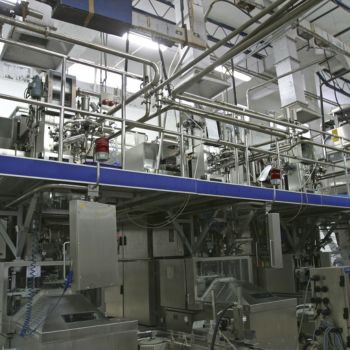Types of Commercial Process Piping
 Process piping describes all parts involved in the construction of a commercial transport system for fluids, gases or raw materials. These systems move substances from one point in a facility to another and are essential for generating energy, managing chemicals and operating HVAC systems. Learn about the various applications of commercial process piping.
Process piping describes all parts involved in the construction of a commercial transport system for fluids, gases or raw materials. These systems move substances from one point in a facility to another and are essential for generating energy, managing chemicals and operating HVAC systems. Learn about the various applications of commercial process piping.
What Is Commercial Process Piping?
Integral to industrial, manufacturing and other commercial applications, process piping starts with more durable materials – carbon steel, stainless steel and copper-nickel alloys – built to handle high pressure, temperatures and potential sources of corrosion. These systems efficiently move liquids, gases and raw materials through a facility.
More complex than residential plumbing, commercial process piping takes the following factors into account:
- Routing for moving materials
- Installation
- Planning materials and other components to improve flow
- Selecting pipe material in relation to the liquid, gas or raw material
- Valves for regulating pressure and flow
- Testing the piping system for performance
- Insulation to manage the temperature of the pipes and their contents
- Labeling pipes in a facility
In addition to pipes, these systems include the following types of components:
- Fittings for connecting pipes and other parts
- Valves for controlling the flow of the substance passing through the pipes
- Pumps for helping move the substance through the pipe system
- Heat exchangers and insulation for managing temperature
- Supports and anchors
Applications for Commercial Process Piping
Diverse industries rely on process piping to transport fluids, gases or raw materials. These include:
- Food and Beverage: Facilities have wastewater piping installed to thoroughly wash dirt and debris from fruit, vegetables and other food items. A second set of pipes assists with a process known as purification to remove and wash away smaller particles before preparation and packaging.
- Oil and Gas: Process piping helps move crude oil from a refinery’s storage facility and assists with the process of turning it into a gas.
- Manufacturing and Materials Processing: In these contexts, process piping helps transport acids, keeping them contained while resisting erosion from the interior.
- HVAC: In commercial facilities, piping is set up to move steam and refrigerant based on heating and cooling needs, as well as air and water.
- Aviation: Piping helps transfer gasoline or diesel fuel from a storage container to a commercial or private jet.
- Stormwater Management: Common across multiple industries, the process of stormwater management involves capturing debris from a facility during a rainstorm and diverting it to a drain that connects to an underground network of piping that leads to a sewer system.
Along with these applications, paper mills, pharmaceutical companies and breweries may use process piping to manage their product, raw materials or waste. Facilities may also install these systems to mix or pressurize gases or filter out substances.
Materials Used for Process Piping
Considering these applications, commercial process piping turns to the following materials to transport and protect various liquids and gases, based on chemical reaction and resistance to temperature and pressure:
- Plastic, including polypropylene, PVC, polyethylene and ABS, all of which provide a baseline of temperature and corrosion resistance. Lining can improve temperature resistance.
- Brass, aluminum and copper alloy pipes, which offer both corrosion and pressure resistance.
- Steel, which holds up to high pressure and provides greater durability. However, composition affects corrosion resistance.
- Cast iron, known for a higher level of corrosion resistance.
To have your commercial process piping system installed or maintained, contact us today.




